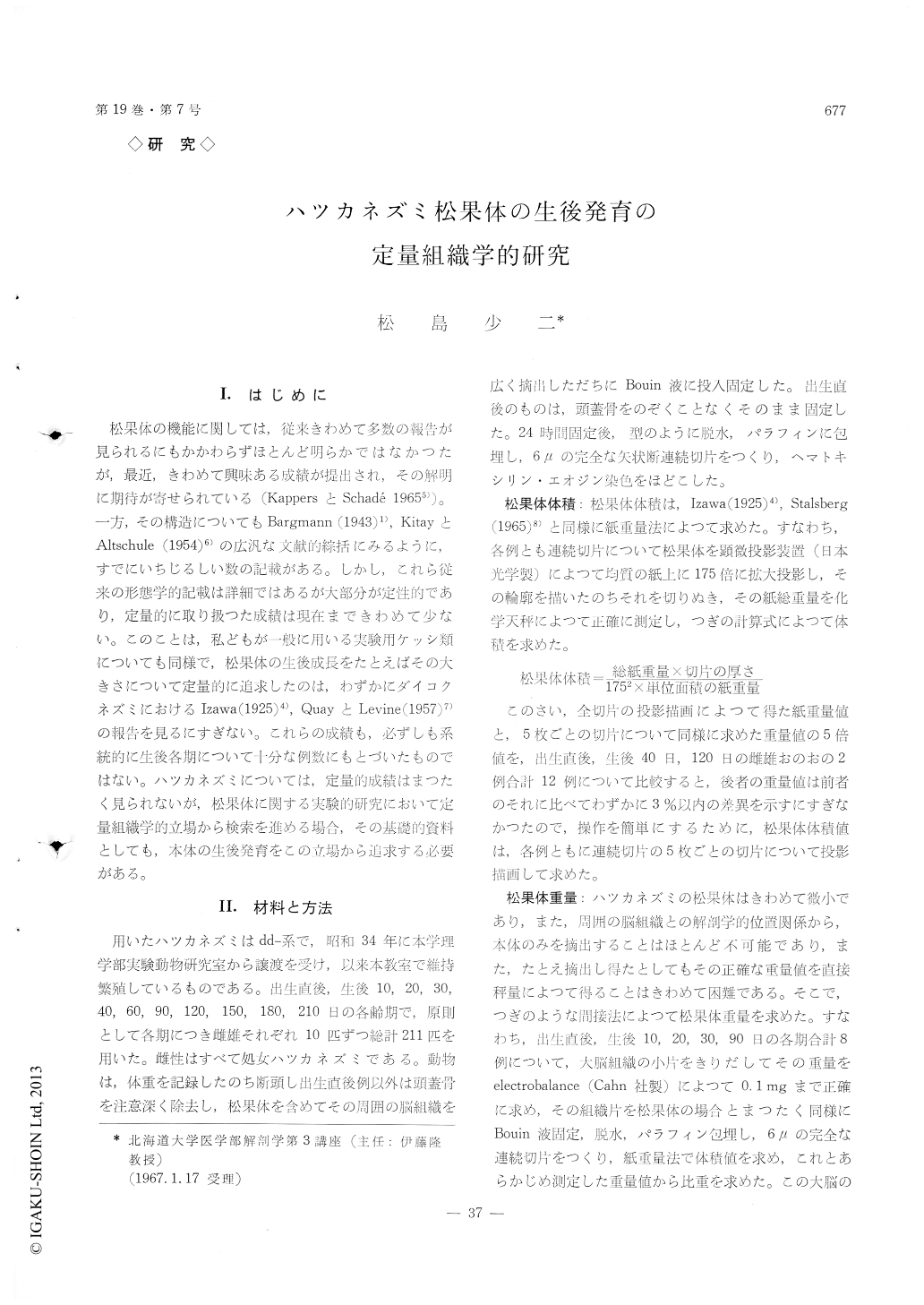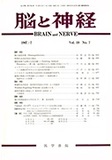Japanese
English
- 有料閲覧
- Abstract 文献概要
- 1ページ目 Look Inside
I.はじめに
松果体の機能に関しては,従来きわめて多数の報告が見られるにもかかわらずほとんど明らかではなかつたが,最近,きわめて興味ある成績が提出され,その解明に期待が寄せられている(KappersとSchadé 19655))。一方,その構造についてもBargmann (1943)1),KitayとAltschule (1954)6)の広汎な文献的綜括にみるように,すでにいちじるしい数の記載がある。しかし,これら従来の形態学的記載は詳細ではあるが大部分が定性的であり,定量的に取り扱つた成績は現在まできわめて少ない。このことは,私どもが一般に用いる実験用ケッシ類についても同様で,松果体の生後戎長をたとえばその大きさについて定量的に追求したのは,わずかにダイコクネズミにおけるIzawa (1925)6),QuayとLevine (1957)7)の報告を見るにすぎない。これらの成績も,必ずしも系統的に生後各期について十分な例数にもとづいたものではない。ハツカネズミについては,定量的成績はまつたく見られないが,松果体に関する実験的研究において定量組織学的立場から検索を進める場合,その基礎的資料としても,本体の生後発育をこの立場から追求する必要がある。
The postnatal growth of the mouse pineal was stud-ied in a quantitative way. The pineal volume was estimated by means of a paper method in completely serial histologic sections. During postnatal develop-ment the pineal shows no sex difference in absolute size. The volumetric growth gradually proceeds from birth to 40 days of age, and then ceases for a short period from 40 to 60 days. After 60 days the pineal again increases in volume until at 90 days it finally attains the adult volume. From 90 days to 210 days the pineal remains almost unaltered in size. The pineal weight was also culculated from the volume on the basis of the weight/volume ratio of the cerebral tissue. The pineal growth during early postnatal period, es-pecially in the first 10 days, is attributed to both pro-liferation and enlargement of pineal cells, but that after 20 days, primarily to enlargement. The pineal differ-entiation was also pursued quantitatively on the basis of nuclear changes in shape characteristic of the pineal cells.

Copyright © 1967, Igaku-Shoin Ltd. All rights reserved.


